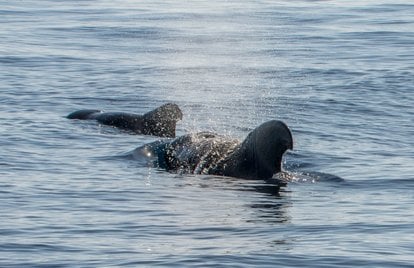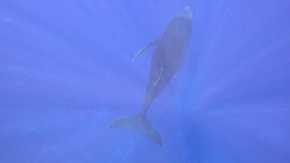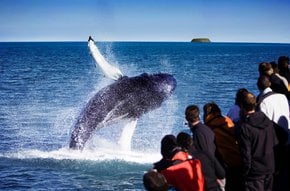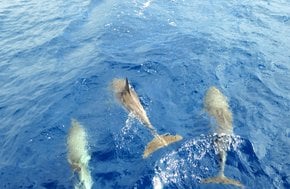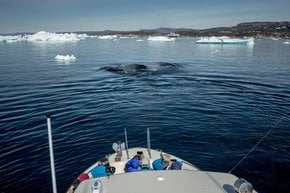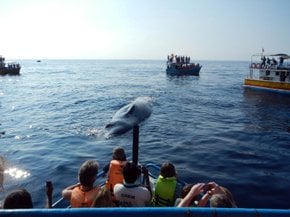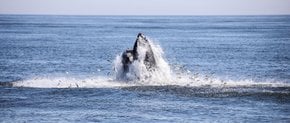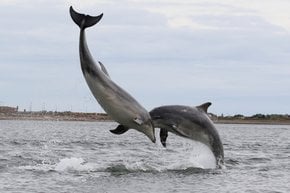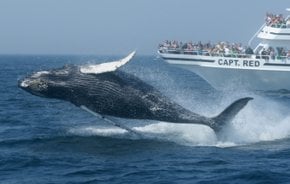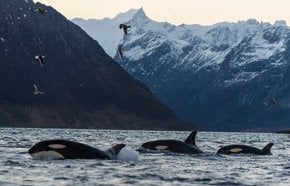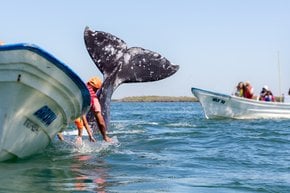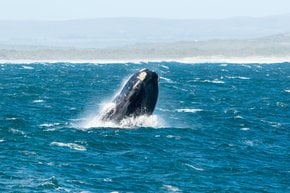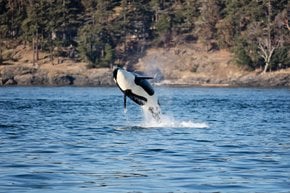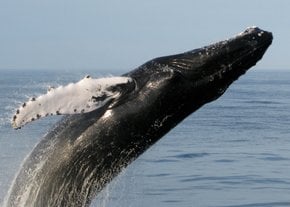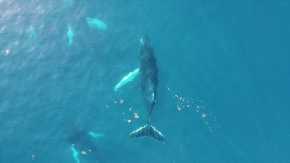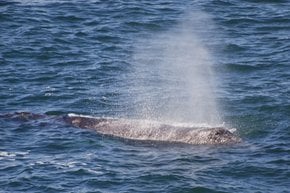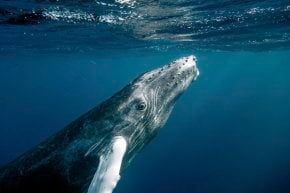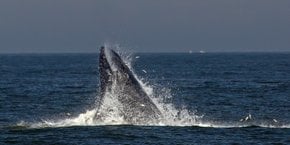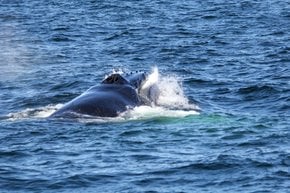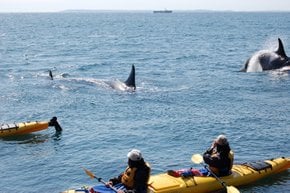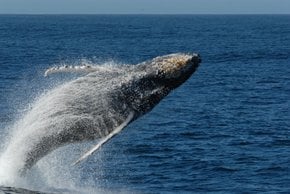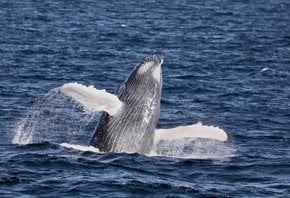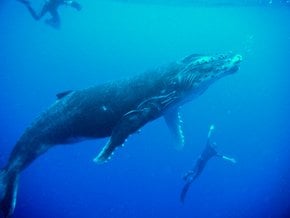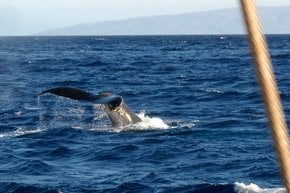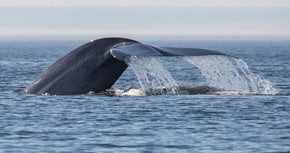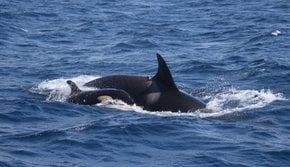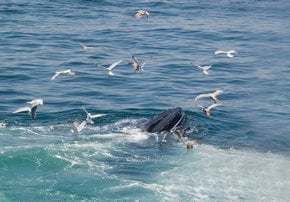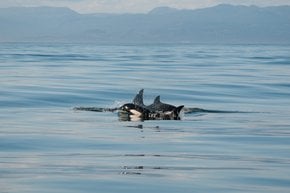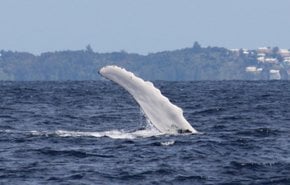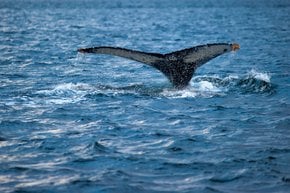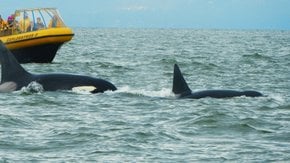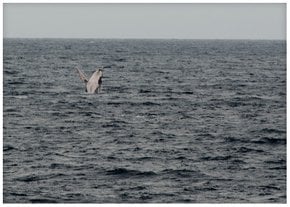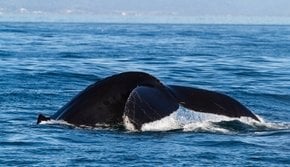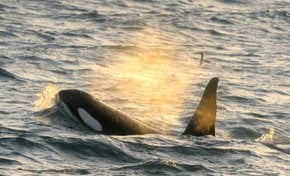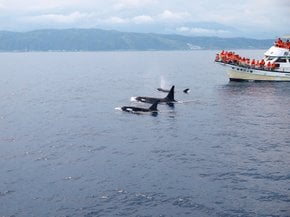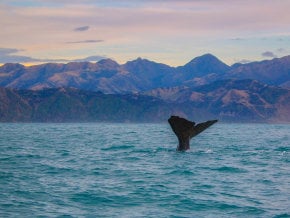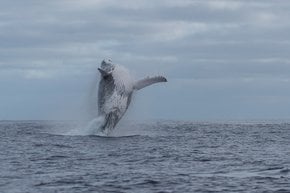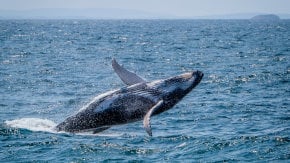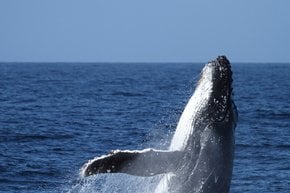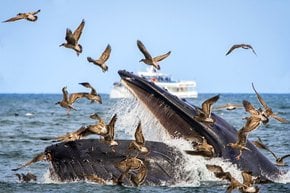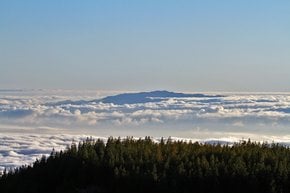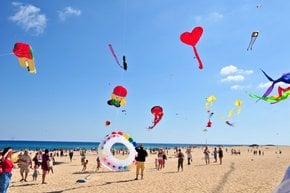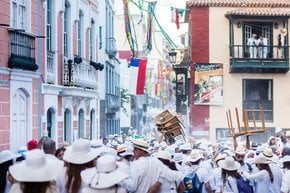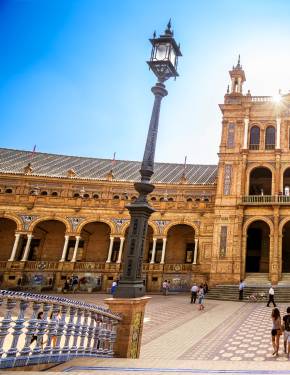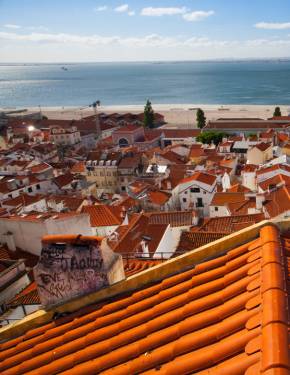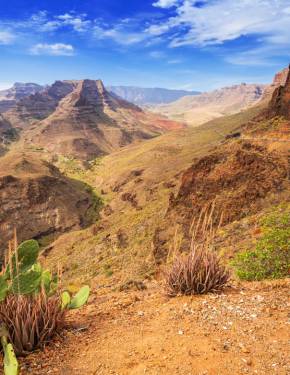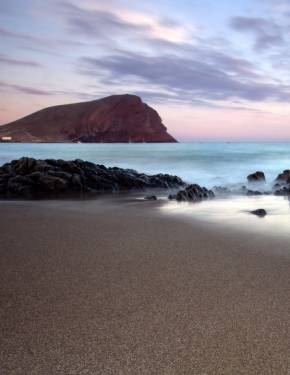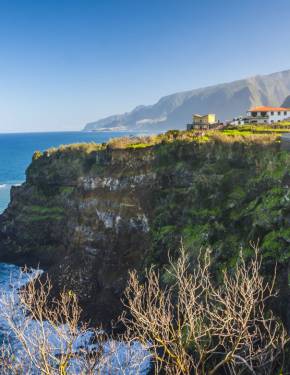Long-Finned Pilot Whales on the Canary Islands 2026
Don't miss a chance to meet with long-finned pilot whales
Best time: March–April
The Canary Islands, particularly Tenerife and La Palma, offer prime locations for observing these whales, especially in spring. During this time, the whales often appear in groups of about six, accompanied by their calves, making for a fantastic whale-watching experience. The calm, clear waters around these islands provide an ideal setting for viewing these social marine creatures up close.
Best Time to See Whales on the Canary Islands
Spring, particularly from March to April, is an excellent time to observe long-finned pilot whales around Tenerife. These whales often travel in groups of about six, accompanied by their calves. They are slow swimmers and sometimes remain still on the water's surface, allowing for closer interaction with slow-moving boats. Although they typically reside in the open ocean, they come closer to shore for socializing and resting. This makes whale-watching trips in Tenerife especially rewarding during this season.
Best Viewing Locations
Long-finned pilot whales can be observed around Tenerife and La Palma in the Canary Islands. Tenerife, the largest of the islands, offers excellent whale-watching opportunities with trips departing from Puerto Colón, Los Cristianos, and other locations. The clear waters around these islands host a variety of marine life, including whales, sea turtles, and dolphins, making it a prime destination for wildlife enthusiasts looking to witness the majestic long-finned pilot whales and other species up close.
Short-Finned Pilot on Tenerife
The short-finned pilot whale is the most commonly seen cetacean species on whale-watching tours in Tenerife. These whales can grow up to 7 meters in length and weigh between 1,000 and 4,000 kg, with males typically larger than females. Juveniles have a light grey coloration that turns black as they mature, and they also have distinctive white spots on their ventral side. Tenerife's waters offer frequent sightings of these remarkable creatures, making it a prime location for observing marine life.
Long-Finned Pilot Whale
The long-finned pilot whale, despite its name, is a large oceanic dolphin species. Females can grow up to 5.8 meters long and weigh 1,800 kg, while males can reach 7.6 meters and weigh up to 3,500 kg. Known for their social nature, they live in groups ranging from a few individuals to hundreds, often alongside other species like bottlenose dolphins and minke whales. These whales use echolocation to hunt deep-sea prey, diving as deep as 600 meters for fish and squid. Their lifespan can extend up to 60 years, with complex social structures led by a dominant female.
Long-finned pilot whales are leisurely swimmers, often seen logging (floating motionless), and communicate through clicks and vocalizations. They are curious yet gentle around humans, and whale watching guidelines should be followed to minimize disruptions to their natural behavior.
Whale-Watching Tips
Despite the whales' massive size and their presence near shallow beaches, whale watching remains a safe activity as long as an appropriate distance is maintained. It is particularly true when observing from boats, where spectators often struggle to contain their excitement and are eager to witness the unique bond between mothers and their calves, which lasts until the young are weaned after about a year. For optimal visibility, try to secure a seat at the bow of the boat. If you are prone to motion sickness, it's best to choose a larger, more stable vessel.
What to Wear
Even on hot days, ocean temperatures can be significantly cooler, so it’s wise to bring a windbreaker or at least a sweater. Opt for long pants and closed-toed shoes with non-slip rubber soles for better comfort and safety. Additionally, protect yourself from harmful UV rays by wearing sunscreen, a sunhat, and sunglasses during your sea adventure.
What to Bring
Bring binoculars and a camera with a telephoto lens to enhance your chances of spotting and photographing sea mammals. Don’t forget to pack extra batteries. Given the likelihood of splashes, especially on small boats or kayaks, consider using a waterproof sleeve or zip bag to protect your phone and photo gear. While packing snacks is not essential, as many large catamarans and sailboats provide food and beverages onboard, smaller Zodiac boats typically offer a basic supply of water for the tour.
Photography Tips
Taking a great whale photo requires patience and quick reflexes. Watch for signs like diving birds, which often signal feeding whales. Focus on areas with bird activity, as the whale may surface suddenly. For shots of breaching or tail flukes, look for a whale arching its back—this usually means it's about to dive. Breaching is harder to predict, but if it happens once, it might happen again. Use a wide-angle lens for ocean scenery and a shorter lens for action shots, as it's easier to track the whale.

